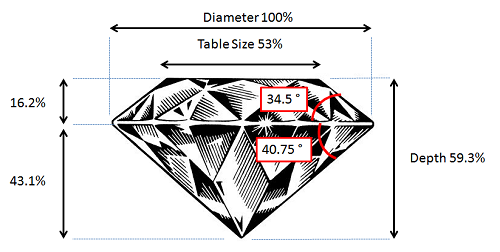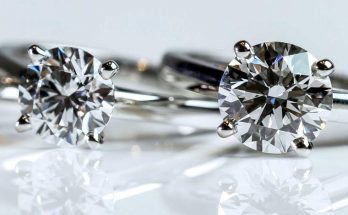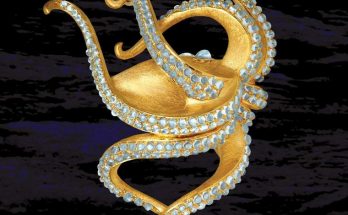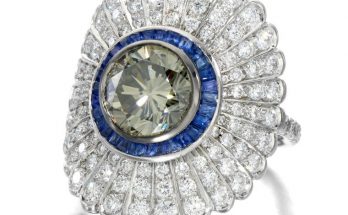Tolkowsky’s Model of the Ideal Diamond
Marcel Tolkowsky revolutionized the world of round brilliant diamonds in 1919 when he published his landmark book titled “Diamond Design“. In his book, he wrote about a set of proportions that would yield in a diamond with maximum beauty, fire and scintillation based on mathematical calculations. Ever since the epic publication, Tolkowsky’s findings were widely applied in diamond polishing by cutters around the world.
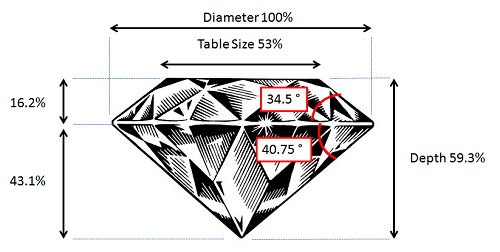
Marcel Tolkowsky’s ideal proportions for a round brilliant diamond
In more modern times, much has changed as Tolkowsky’s groundbreaking discoveries were further developed upon. With the help of specialized studies and technological advancement, researchers from GIA & AGS had published scientific journals that changed the way we polish and buy diamonds.
One of the major breakthroughs made was the discovery that ideal cut diamonds do not have to follow a single set of proportions as set forth in Tolkowsky’s original dissertation. In fact, a diamond could be polished within a range of proportions and it would still display ideal optics.
General Ideal Proportions For Round Brilliant Cut
For the modern day shopper, scroll downwards and use MY curated list of proportions instead.
| Table % | 52.4% to 57.5% |
| Depth % | 56.88% to 63.92% |
| Crown Angle | 33.7° to 35.8° |
| Pavilion Angle | 40.2° to 41.25° |
| Girdle Thickness | Thin – Medium |
| Culet Size | None |
Source: The Ideal Cut: A Consumer’s Guide. *Note: This table should be used as a reference only.
In Tolkowsky’s initial publication, he stated that the ideal cut diamond should only have a table proportion of 53%. However, it has now been widely accepted that an ideal cut could have proportions which fall within certain values and diamonds with bigger tables can also achieve ideal optical properties.
Both GIA & AGS had also came up with comprehensive tables of proportions that “ideal stones” should have. You can download the AGS proportions chart here and GIA proportions chart here to do your own comparisons and analysis.
My Personal Criteria is Even Stricter Than Both GIA & AGS Labs
Over the years of examining and analyzing diamonds, I had tabulated my own set of parameters for selecting a ideal cut round diamonds. While it is modeled after Tolkowsky’s initial findings and studies from GIA/AGS, my parameters are much more stringent.
Here’s why… This tighter set of parameters helps to filter diamonds that are the cream of the crop and I personally use it to handpick diamonds for myself. To save time and weed out the badly cut diamonds, I strongly recommend that you apply these parameters into your own diamond search.
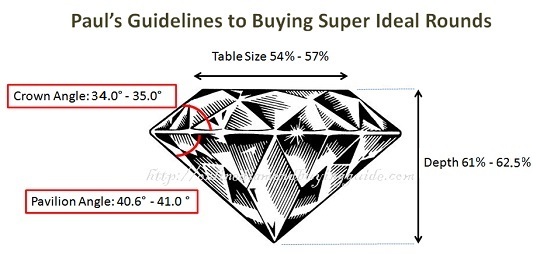
Now, with all the technical specifications laid out, you might assume that all diamonds could be cut to ideal standards if cutters simply follow the formulas. However, the truth is far from that. In fact, it is estimated that 90% of the round diamonds are cut to dismal proportions by choice. Read on to find out why such a phenomenon exists in the industry…
>>
